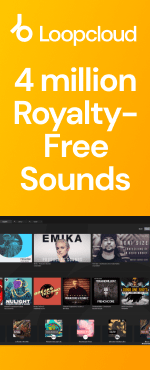Latest releases
Recent Releases
-
-
 ►i
►i
2025 Wrapped Cinematic Bundle
by: Loopmasters
-
 ►i
►i
2025 Wrapped House Bundle
by: Loopmasters
-
 ►i
►i
2025 Wrapped Bass Music Bundle
by: Loopmasters
-
 ►i
►i
2025 Wrapped Hip-Hop & Trap Bundle
by: Loopmasters
-
 ►i
►i
2025 Wrapped Techno Bundle
by: Loopmasters
-
 SALE
►i
SALE
►i
Sak Noel - Barnaton The Latin House
by: Loopmasters
-
 SALE
►i
SALE
►i
KÉO - RnB & Soul Vocals
by: Loopmasters
-
 SALE
►i
SALE
►i
Life On Planets - Indie House
by: Loopmasters
-
 SALE
►i
SALE
►i
Nightlife - Progressive House
by: Loopmasters
-
 ►i
►i
2-Step & Garage
by: Singomakers
-
 ►i
►i
SL8R - Contemporary Jungle
by: OneZero Samples
-
 ►i
►i
Sigma Tech House
by: IQ Samples
-
 ►i
►i
YZENIA: Future Vocals
by: Lost Audio
-
 ►i
►i
Soulchild Neo Soul Vibes 2
by: Apollo Sound
-
 ►i
►i
Chill Out Sacred Aurora
by: BFractal Music
-
-
-
 ►i
►i
Tech House Engine
by: ZTEKNO
-
 SALE
►i
SALE
►i
Beatbox Arsenal
by: Aim Audio
-
 ►i
►i
HYDRACORE: Vital Presets
by: DABRO Music
-
 ►i
►i
Sunder: UK 140 & Dubstep
by: Rewind Samples
-
 ►i
►i
Ultimate Dubstep Bundle
by: Element One
-
 ►i
►i
The Beat Supply
by: Famous Audio
-
 ►i
►i
Dub Pack Series Vol 20 - Roots Revelation
by: Renegade Audio
-
 ►i
►i
Instant Cues – Hybrid Pulse Intros
by: Cinetools
-
 ►i
►i
Techno Impulse
by: House Of Loop
-
 ►i
►i
Afro House Dreams 5
by: HY2ROGEN
-
 ►i
►i
Old School Techno Vortex
by: THICK Sounds
-
 ►i
►i
Big Room Hard Techno
-
 ►i
►i
Ultimate Electro Bundle
by: Element One
-
 ►i
►i
Ultimate Drum Collection Vol 3
by: Renegade Audio
-
 ►i
►i
Ultimate FX & Vox Collection Vol 3
by: Renegade Audio
-
-
-
 ►i
►i
Deconstructed Sounds
by: ethereal2080
-
 ►i
►i
Loyal - RnB Bounce
by: 91Vocals
-
 ►i
►i
House Music
by: Image Sounds
-
 ►i
►i
Ambious
by: Zenhiser
-
 ►i
►i
Lunar - Progressive Techno Presets for Serum 2 by Imaginate
by: Black Octopus
-
 ►i
►i
Vocal Deep House Vol. 6
by: Rasster Samples
-
 ►i
►i
Disco & Funk Sessions Vol 3
by: Samplestar
-
 ►i
►i
Warehouse Rhythms
by: Wavetick
-
 ►i
►i
Savannah
by: Producer Loops
-
 ►i
►i
Emotional 2-Step & Garage Vol 2
by: Black Octopus
-
 SALEAWARD
►i
SALEAWARD
►i
Stranger Synths
by: Loopmasters
-
 SALE
►i
SALE
►i
Indo House
by: Loopmasters
-
 ►i
►i
Serum2 Presets Vol. 2 - Peaktime Techno by Gizmo & Mac
by: Codex Samples
-
 ►i
►i
VERITAS - Melodic Techno
by: Keep It Sample
-
 ►i
►i
London Techno 3
-
-
-
 ►i
►i
Future Garage Essentials
by: IQ Samples
-
 ►i
►i
Afterlight: Industrial Drama
by: Leitmotif
-
 ►i
►i
ECHIDNA: Phase Plant Presets
by: DABRO Music
-
 ►i
►i
90's House Roots
by: Singomakers
-
 ►i
►i
Classic UK Dubstep
by: Element One
-
 ►i
►i
Raw Machinery: Hard Techno Toolkit
by: Freaky Loops
-
 ►i
►i
Launch Pad Series Vol 36 - Skaville
by: Renegade Audio
-
 ►i
►i
Chaotic IDM & Atonal Rhythms
by: Blind Audio
-
 ►i
►i
Abstract Beds
by: SFXtools
-
 ►i
►i
ELEMENTS: House Percussion Loops 3
by: HY2ROGEN
-
 ►i
►i
Obscure Boom Bap Tapes
by: BFractal Music
-
 ►i
►i
Percussions Indian
by: House Of Loop
-
 ►i
►i
Dub Pack Series Vol 19 - Dub Prophecy
by: Renegade Audio
-
 ►i
►i
Relaxed Dub
by: THICK Sounds
-
 ►i
►i
Ultimate Bass Collection Vol 3
by: Renegade Audio
-

-
 Studio
Studio
Artist Series: Best of Deep House
-
 Studio
Studio
Artist Series: Best of Techno
-
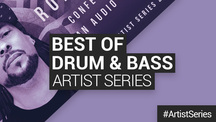 Studio
Studio
Artist Series: Best of Drum and Bass
-
 Studio
Studio
Artist Series: Best of Hip Hop
-
 Studio
Studio
Artist Series: Best of Tech House
-
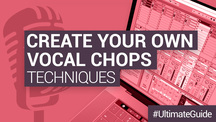 DAW Tutorials
DAW Tutorials
How to create your own vocal chops
-
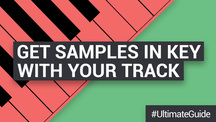 Studio
Studio
How to get Samples in Key with your Track
-
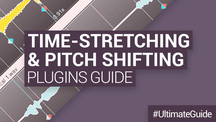 Plugins
Plugins
The Best Timestretch and Pitchshifting Software & Plugins
News and Reviews
-
 news
news
Loopmasters Holiday Advent Calendar - A New Gift Every Few Days
-
 news
news
Black Friday Deal: Get a Free Sample Pack with Every Purchase at Loopmasters!
-
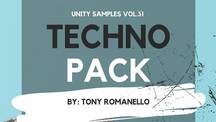 review
review
Unity Records – Unity Samples Vol.31 by Tony Romanello Future Music Review
-
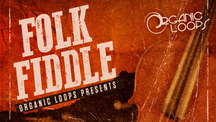 review
review
Organic Loops - Folk Fiddle - Computer Music Magazine Review
VIP Reviews
-
-
 ►i
►i
 Agressor Bunx
Drum and Bass
Agressor Bunx
Drum and Bass
-
 ►i
►i
 Agressor Bunx
Drum and Bass
Agressor Bunx
Drum and Bass
-
 ►i
►i
 Agressor Bunx
Neurofunk
Agressor Bunx
Neurofunk
-
 ►i
►i
 Jason Nevins
Reggae
Jason Nevins
Reggae
-
 ►i
►i
 Veak
Drum and Bass
Veak
Drum and Bass
-
 ►i
►i
 Veak
Drum and Bass
Veak
Drum and Bass
-
 ►i
►i
 Jason Nevins
Filmscore
Jason Nevins
Filmscore
-
 ►i
►i
 Jason Nevins
House
Jason Nevins
House
-
 ►i
►i
 Jason Nevins
Tech House
Jason Nevins
Tech House
-
 ►i
►i
 Magnus Asberg
Action
Magnus Asberg
Action
-
 ►i
►i
 Magnus Asberg
Tech House
Magnus Asberg
Tech House
-
 ►i
►i
 Magnus Asberg
Minimal Techno
Magnus Asberg
Minimal Techno
-
Loopmasters is the definitive place to find the best sample libraries for your music. With the latest sounds from established producers, industry heavyweights and upcoming beatmakers, provided as royalty free samples and loops. Every one of our sample packs is crammed with the best music samples, meticulously produced, prepared and formatted for smooth integration in your workflow.
We’ve got the best sample packs for House, Techno, Drum & Bass, EDM and loads more, with live music sample packs and instrument sample libraries to embellish and develop your unique sound. Our royalty free music samples come from artists, producers and instrumentalists across the globe, ensuring you get the best loops played and recorded at the highest quality by seasoned professionals and top studio engineers.
Download royalty free sounds from our website or using Loopcloud, the online cloud-based browser where you’ll find exclusive content each week free to add to your music sample library. Browse our entire catalogue and discover more royalty free music loops - download samples you like using our intuitive software, which integrates seamlessly with the major daws.
Our royalty free music samples come organised and labeled so you can be sure of staying in key and getting the tempo right, and in the most popular formats, with rex loops, acidized wavs and apple loops to suit your preference.



















